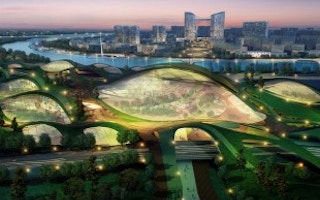Fifty years ago, during a time of food shortages, China’s young socialist government singled out a few farm villages as role models for the nation, saying that their high crop yields made them examples that other communities could learn from.
Today, facing challenges like runaway urbanization, soaring energy consumption and environmental degradation, China is hoping to establish a different set of paragons. With its cities expected to swell by another 350 million residents in the next 25 years, according to World Bank estimates, the government is scurrying to find sustainable urban solutions. To that end, it hopes to have 100 model cities, 200 model counties, 1,000 model districts and 10,000 model towns by 2015.
But already, some of the model cities mapped out early on, like Dongtan, an eco-city that was to house 500,000 people on Chongming Island near Shanghai, have been abandoned because of a range of problems ranging from official corruption to targets that proved overly ambitious.
Conversely, an eco-city in Tianjin created in concert with the government of Singapore is the latest, biggest and most successful of the projects to date. The Chinese government hopes that it will emerge as an economic powerhouse along the lines of regional agglomerations of cities in the Yangtze River and Pearl River Delta regions.
Click here to read the full story.










